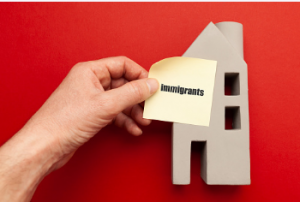The employer-sponsored migration (ESM) program enables an Australian employer to sponsor an overseas worker. This visa type is designed for skilled workers with a particular skill set. There are many different types of employer-sponsored visas with specific requirements. For example, you may be able to apply for a regional or temporary visa. This article will provide information on the various types of visas and their requirements. We’ll also cover English language tests.
Subclass 482 TSS visa is a temporary employer-sponsored visa.
If you are looking to immigrate to Australia as a skilled worker, you may qualify for a skilled worker visa. To apply for a skilled worker visa, you will need to find a company willing to sponsor you and have an offer of employment. It will include providing the details of your skills and personal details. It will take six weeks for your application to be approved.
Subclass 186 (ENS)
The applicant must meet specific English language and skills requirements and be under the age of thirty-one years and in good health. They must also meet health and character requirements. Applicants must submit their application within six months of their employer’s nomination. Once their nomination has been approved, they must wait a few months before they can work legally in Australia. Applicants must also meet the requirements of each sub-category.
Subclass 494 regional (provisional) visa
 The Subclass 494 regional (provisional) migrationsolutions.com.au/ employer sponsored migration SA visa is designed to provide skilled immigrants with a work and lifestyle visa in regional Australia. This program aims to meet the skilled labour shortages in regional Australia. Successful applicants may apply for permanent residence after three years of residence. The visa allows applicants to work, study, and live in regional Australia. Applicants must be younger than 45 years of age.
The Subclass 494 regional (provisional) migrationsolutions.com.au/ employer sponsored migration SA visa is designed to provide skilled immigrants with a work and lifestyle visa in regional Australia. This program aims to meet the skilled labour shortages in regional Australia. Successful applicants may apply for permanent residence after three years of residence. The visa allows applicants to work, study, and live in regional Australia. Applicants must be younger than 45 years of age.
This visa allows employers to source overseas skilled workers in line with a labour agreement. Applicants must hold a skilled worker visa and be sponsored by a Standard Business Sponsor, and the visa grant lasts five years and can be extended once the employer is satisfied with the candidate’s performance. The skilled worker visa offers a pathway to permanent residence in Australia. This visa stream allows employers to find the best skilled foreign workers for their workforce.
English language tests
You must have good English language skills to qualify for a migrationsolutions.com.au/ employer sponsored migration SA Australian immigration program. It is true whether you are applying for a skilled migration program or are a spouse. In addition, a registered migration agent must take the English Test before an applicant can apply. Therefore, if you don’t have a valid English language test, you should consider retaking it. Once you have completed the test, you can apply for permanent residence in Australia.
Exemptions from English language tests
For most visa applications, English language tests are required for all visa applicants. However, if you do not have a UK or Canadian passport, you can get an exemption if you have taken the appropriate English language test. For example, if you have lived in the USA for a few years or have a partner who speaks less than functional English, you can qualify for an exemption from the test. The skills assessment authority and Department of Immigration require English tests for these visa applications.
Generally speaking, the IELTS test is the best way to prove you are a fluent English speaker. However, some skills assessment authorities require that you take the Academic version instead of the General. To demonstrate your proficiency in English, you must get a minimum score in each band in one sitting. In addition, there is the Occupational English Test, which is accepted as proof of proficiency in the language but is only appropriate for medical professionals.
Cost of sponsoring a skilled worker
There are several costs to consider if you are considering sponsoring a foreign worker for Australian immigration. Sponsoring costs depend on the visa category the applicant is applying for. In addition, the Department of Home Affairs charges other fees associated with the sponsorship process. Therefore, the costs of sponsoring an applicant may be more than the amount of the visa application. Listed below are the costs to consider. The cost of a visa application will vary depending on the visa category and the country of residence.